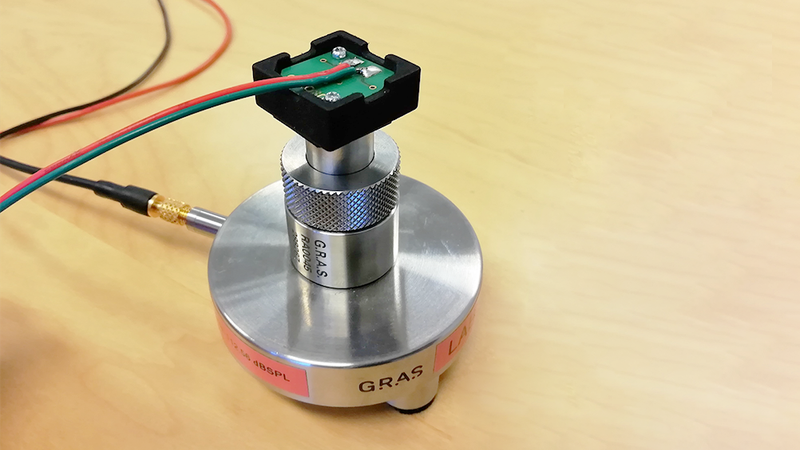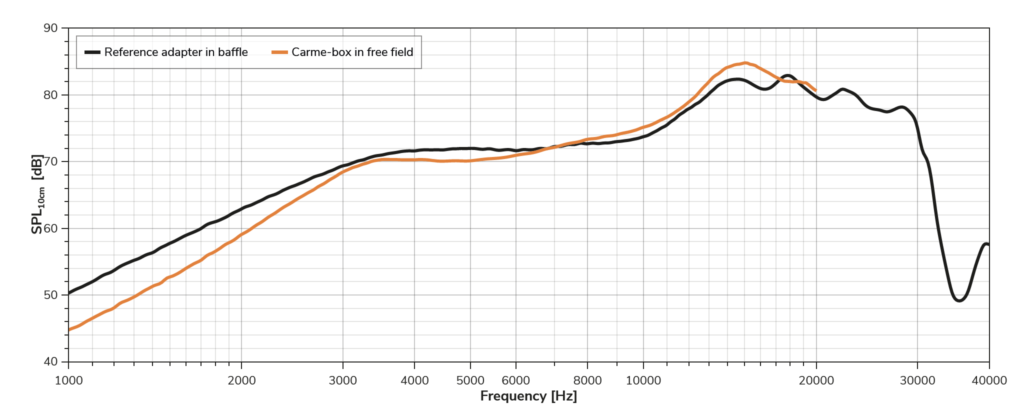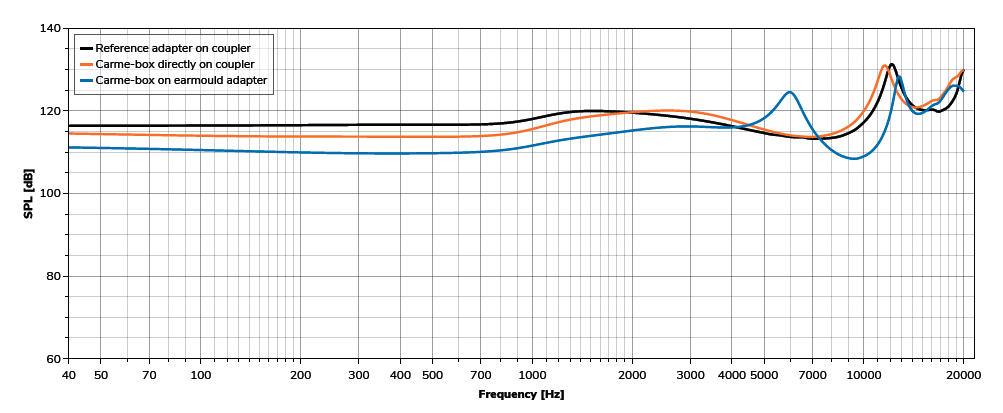How to measure USound MEMS loudspeakers
USound MEMS loudspeakers can be evaluated in both acoustic domains: baffle and coupler conditions.

MEMS speaker on coupler
This article was first published on
www.usound.comUSound currently offers two MEMS loudspeakers that are part of the Ganymede series: Adap UT-P2019 and Achelous UT-P2018. Adap is optimized towards maximum acceleration, making it ideal for free-field applications, whereas Achelous is optimized towards maximum excursion, making it especially suitable for occluded-ear applications. Therefore, USound MEMS loudspeakers can be evaluated in both acoustic domains: baffle and coupler conditions. For baffle conditions, the IEC 60268-5 standard is used, while for coupler conditions, the relevant standard is the IEC 60318-4, formerly known as 60711, or simply “711”. For both setups, proprietary measurement adapters are used to fit USound speakers to the standardized setup. Using the adapters, it is possible to achieve the results shown on the Adap and Achelous datasheets. Measurements with the Carme Box UJ-R1020 can also assess the speakers’ performance even if they lead to slightly different results. In this article, we will show several possibilities to perform the measurements and the differences between those methods.
BAFFLE MEASUREMENT (IEC 60268-5)
To measure the loudspeaker in a baffle, it is necessary to place the MEMS speaker inside the measurement adapter. The following picture shows a drawing of the proprietary adapter used by USound.
The electronic connection is achieved using pogo pins that press against the pads on the back of the loudspeaker. A gasket is placed in front of the speaker for sealing purposes, and an opening in the baffle enables the speaker to radiate towards the microphone, which is placed at a 10 cm distance from the baffle (as per the IEC 60268-5 standard). The SPL and THD results measured with this setup can be found on the Adap UT-P2019 datasheet.
COUPLER MEASUREMENT (IEC 60318-4)
For coupler measurements, a coupler adapter was designed to place the speaker close to the coupler without introducing additional resonances. This was obtained using a port of 3.6 mm diameter and 1.5 mm length (with an additional gasket of 0.5 mm, compressed to 0.3 mm). By using these dimensions, any emerging resonance is guaranteed to fall above the audible frequency range (>20 kHz). With the use of USound’s coupler adapter, the measurement can be performed without the earmold adapter. The SPL and THD results measured with this setup can be found on the Achelous UT-P2018 datasheet.
MEASURING MEMS SPEAKERS WITH THE CARME UJ-R1020 SPEAKER BOX.
The two methods mentioned above require the use of proprietary coupler adapters. Another possibility to measure USound loudspeakers is by using the Carme UJ-R1020 speaker box. With a back volume of 100 mm³, it provides the necessary sealing to avoid an acoustic short circuit. It offers a convenient way to connect USound MEMS speakers to USound‘s linear amplifier Amalthea UA-R3010 or to the Helike UA-E3010 development board. With the Carme speaker box, both measurements in free-field and measurement on an artificial ear are possible.
MEASUREMENT WITH CARME BOX IN FREE-FIELD
The box must be placed in a reflection-free space such as an anechoic chamber and pointed towards the microphone. Since no baffle is used in this setup and a back volume is introduced, the frequency response will be different from the results present on the Adap datasheet. Due to the missing baffle, the SPL will be ~6 dB lower below resonance frequency. The following graph compares the results obtained with the USound coupler adapter and with Carme Box.

Measurement with Carme Box in a coupler
For coupler measurements, two setups are possible: with or without the earmould adapter. Therefore, the Carme UJ-R1020 box can be placed directly on the base part of the coupler or the earmould adapter, as shown in the following picture.
In both cases, to seal the air volume between the box and the coupler, it is necessary to apply sealing material (blu-tack, putty) between the two parts. Since the dimensions are not the same as with the USound coupler adapter, some differences will emerge.
Recommended reading: Why USound MEMS speakers outperform electrodynamic and balanced armature micro speakers
Nevertheless, the results will also be relevant to assess the MEMS speaker’s performance. A comparison between the results obtained from the two methods mentioned above and the setup with USound’s coupler adapter is shown in the following graph.
